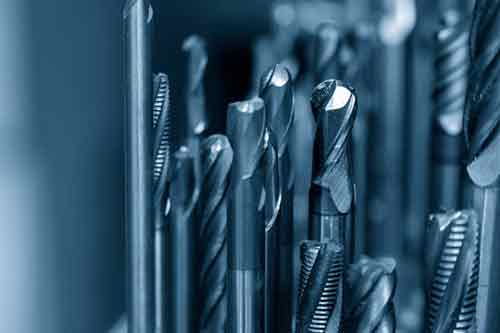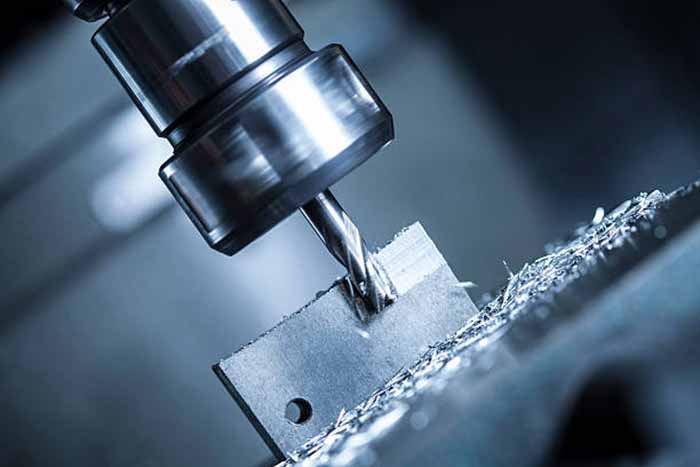When it comes to machining metals, there are many different tools available. It’s important to know how to use each one correctly and take good care of them so they last as long as possible.
There are also certain materials that can’t be used for machining on their own because they aren’t able to withstand the high heat required by the cutting process.
Angle Grinder

Angle grinders are handheld power tools that can perform a variety of functions. They are a common substitute for a variety of other cutting tools and are safe to use as long as you are wearing the proper safety equipment.
They come in different sizes, power sources and disc types to handle a wide range of tasks. These versatile tools are often more powerful than corded power saws and can be used to replace many of the other tools that take up space in your toolbox or garage.
They can be used to cut metal, remove paint and rust, and clean up projects. They also work well for cleaning a variety of other materials like concrete and tile.
Die Grinder
The die grinder is a tool that can be used to grind, polish, and smoothen the surfaces of any metal or wooden object. It can be a very helpful tool if you’re working on a lot of woodworking projects.
It can also be used to smooth out areas that have been damaged by rust or paint. Whether you’re doing collision repairs on a car or repairing heavy machinery, a die grinder can help you get rid of rust in smaller areas that your sander cannot reach.
They come in a variety of different models, including right angle and straight. Both work fundamentally the same, but right angle models are designed to be able to access narrow spaces.
Chop Saw
A chop saw is a powerful tool that’s used to cut long lengths of wood or metal into smaller pieces. They don’t cut angles, curves or bevels and don’t do rip cuts (cut along the length).
Chop saws have been around for a while. They were developed to streamline the process of cutting lumber on construction sites and in home wood shops.
They consist of a table with a fence at the back that supports the material being chopped and a clamp to hold it in place. The blade is mounted on an adjustable stand that extends to a foot above the table’s middle and pivots up or down.
Hole Saw
The hole saw is an incredibly handy tool that allows you to create circular holes in a variety of materials. These circular holes are typically created prior to installing drainage pipes and plumbing fittings as well as for a range of other applications.
They are mounted onto a power drill via an arbor, and can be used with corded or cordless drills (of 18 volts or higher). They’re usually attached to a 3/8 or 1/2 inch chuck.
The teeth in a hole saw are set at either a variable or constant pitch, and they can be set to cut at different speeds depending on the material you’re cutting. Variable pitch blades will make a smoother cut and reduce wear on the teeth.
Cut-Off Tool
The Cut-Off Tool is a type of power tool used to cut metal and other materials. They are portable and easy to use.
These tools have about 1 HP motors and have their cutting discs aligned at a right angle to the shaft. This makes them ideal for thin metal cutting tasks.
They can be powered by electric or pneumatic sources, and they are also lightweight to reduce operator fatigue. These tools also feature a wheel guard that deflects sparks, debris, and shattered wheel fragments away from the user.
Metal Snip
A metal snip is an essential tool for cutting sheet metal. It’s like a pair of scissors, but it has curved jaws that allow for left or right turns.
Snips have handles that are color-coded to signify what cut they’re made for. Yellow snips are designed for making straight cuts, while green snips are best for making left or right cuts.
You can also use a combination of red and green snips to make tight curves or arcs. This is done by cutting two inches at a time on alternating sides – so, two inches up the right side and two inches up the left.
Oxy-Acetylene Torch
Oxy-Acetylene torches are used for welding, heating and cutting metals. This type of torch is portable, easy to use and produces good cutting results on steel.
Torches are typically set up with two hose connections for oxygen and acetylene, and one or more shutoff valves. Oxygen flows through a mixing valve into the cutting circuit, while acetylene flows directly to the cutting tip.
The gas pressure for each is set according to the job being done. This is important because it determines how quickly the flame will burn through a piece of metal.
